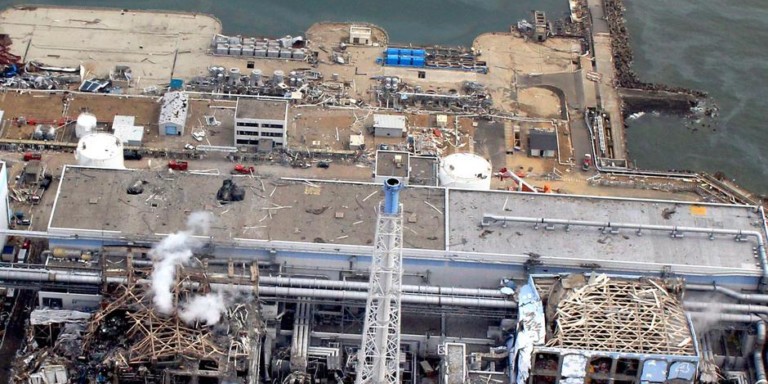Radioactive Fallout From Fukushima Worse than Thought
Posted July 7, 2016 by David Schumann | A Nuclear World

Here are some articles on some new findings from Fukushima fallout showing that radioactive cesium “was concentrated and deposited in non-soluble glass microparticles, as a type of ‘glassy soot’.” This is a disturbing finding because typically Cesium is very water soluble. This is what makes it easily absorbed into plants and animals, but it also means it can be washed away and diluted with greater ease. The fact that much of the cesium resulting from the meltdowns at Fukushima was released in a chemically different form, in these radioactive and microscopic glass particles, means it will linger longer and may present different issues for the body when consumed.
The glass particles significantly concentrated the cesium resulting in radioactivity levels at least 100 times higher than expected. Radioactive cesium (Cs-137 or -134) is already millions of times more radioactive than naturally occurring radioactive materials, like potassium -40, but this ‘freak’ radioactive glass released from the Fukushima accident is far worse. How these more insoluble particles act in the body is still unknown. Professor Grambow, quoted below, thinks that this form of insoluble radiation inhaled would take much longer to leave the body.
New research shows that most of the radioactive fallout which landed on downtown Tokyo a few days after the Fukushima accident was concentrated and deposited in non-soluble glass microparticles, as a type of ‘glassy soot’. This meant that most of the radioactive material was not dissolved in rain and running water, and probably stayed in the environment until removed by direct washing or physical removal. The particles also concentrated the radioactive caesium (Cs), meaning that in some cases dose effects of the fallout are still unclear. These results are announced at the Goldschmidt geochemistry conference in Yokohama, Japan.
Because of the high Cs content in the microparticles, the radioactivity per unit mass was as high as ~4.4×1011 Bq/g, which is between 107 and 108 times higher than the background Cs radioactivity per unit mass of the typical soils in Fukushima
According to Dr Satoshi Utsunomiya;
This work changes some of our assumptions about the Fukushima fallout…the concentration of radioactive caesium in microparticles means that, at an extremely localised and focused level, the radioactive fallout may have been more (or less) concentrated than anticipated. This may mean that our ideas of the health implications should be modified.
Commenting, Prof. Bernd Grambow, Director of SUBATECH laboratory, Nantes, France and leader of the research group on interfacial reaction field chemistry of the ASRC/JAEA, Tokai, Japan, said:
The leading edge observations by nano-science facilities presented here are extremely important. They may change our understanding of the mechanism of long range atmospheric mass transfer of radioactive caesium from the reactor accident at Fukushima to Tokyo, but they may also change the way we assess inhalation doses from the caesium microparticles inhaled by humans. Indeed, biological half- lives of insoluble caesium particles might be much larger than that of soluble caesium.
Comments ( 0 )